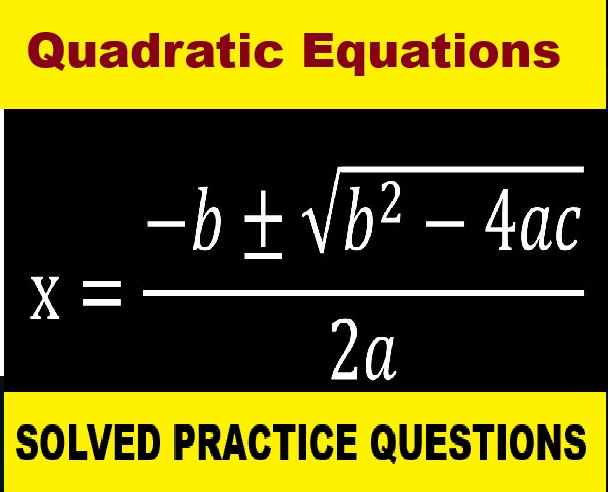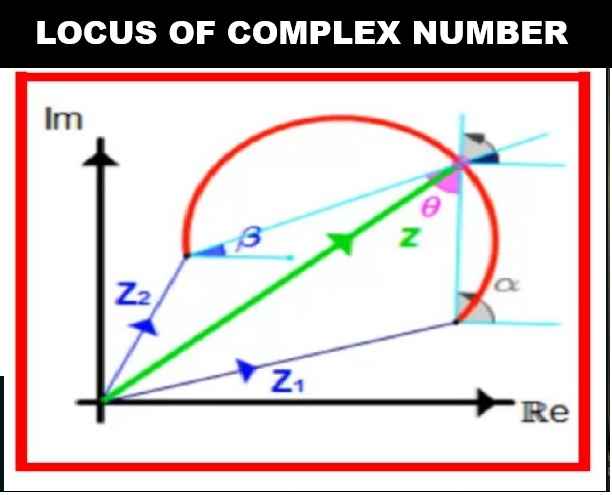Electromagnetic Waves MCQ for ISC Class-12 Physics . These MCQ / Objective Type Questions is based on latest reduced syllabus according 2021-22 session on bifurcated pattern. Main motto of Electromagnetic Waves MCQ Type Question is cracking the next upcoming exam of council. Visit official website CISCE for detail information about ISC Board Class-12 Physics.
MCQ Type Questions for ISC Physics Class-12 Electromagnetic Waves
| Board | ISC |
| Class | 12th (XII) |
| Subject | Physics |
| Ch-Name | Electromagnetic Waves |
| Syllabus | on bifurcated syllabus (after reduction) |
| Session | 2021-22 |
| Topic | MCQ / Objective Type Question |
Electromagnetic Waves MCQ Type Questions for ISC Physics Class-12
Question 1: According to Maxwell’s hypothesis, a changing electric field gives rise to
(a) an e.m.f
(b) electric displacement current
(c) magnetic field
(d) pressure gradient
Answer: (c) magnetic field
Question 2: The current in the electric circuit which arises due to flow of electrons in the connecting wires of the circuit in a defined closed path is called
(a) alternating current
(b) direct current
(c) conduction current
(d) displacement current
Answer: (c) conduction current
Question 3: An electromagnetic wave can be produced, when charge is
(a) moving with a constant velocity
(b) moving in a circular orbit
(c) falling in an electric field
(d) both (b) and (c)
Answer: (d) both (b) and (c)
Question 4: An electromagnetic wave propagating along north has its electric field vector upwards. Its magnetic field vector point towards
(a) north
(b) east
(c) west
(d) downwards
Answer: (b) east
Question 5: Which of the following statement is false for the properties of electromagnetic waves?
(a) Both electric and magnetic field vectors attain the maxima and minima at the same place and same time.
(b) The energy in electromagnetic waves is divided equally between electric and magnetic field vectors.
(c) Both electric and magnetic field vectors are parallel to each other and perpendicular to the direction of propagation of wave.
(d) These waves do not require any material medium for propagation.
Answer: (c) Both electric and magnetic field vectors are parallel to each other and perpendicular to the direction of propagation of wave.
Question 6: A charged particle oscillates about its mean equilibrium position with a frequency of 109 Hz. The frequency of electromagnetic waves produced by the oscillator is
(a) 106 Hz
(b) 107 Hz
(c) 108 Hz
(d) 109 Hz
Answer: (d) 109 Hz
Question 7: The ultra high frequency band of radio waves in electromagnetic wave is used as in
(a) television waves
(b) cellular phone communication
(c) commercial FM radio
(d) both (a) and (c)
Answer: (b) cellular phone communication
Question 8: The waves used by artificial satellites for communication is
(a) microwaves
(b) infrared waves
(c) radio waves
(d) X-rays
Answer: (a) microwaves
Question 9: Which of the following electromagnetic waves is used in medicine to destroy cancer cells?
(a) IR-rays
(b) Visible rays
(c) Gamma rays
(d) Ultraviolet rays
Answer: (c) Gamma rays
Question 10: The electromagnetic waves do not transport
(a) energy
(b) charge
(c) momentum
(d) information
Answer: (b) charge
Question 11: Which of the following has/have zero average value in a plane electromagnetic wave?
(a) Both magnetic and electric fields
(b) Electric field only
(c) Magnetic field only
(d) None of these
Answer: (a) Both magnetic and electric fields
Question 12: The conduction current is same as displacement current when source is
(a) ac only
(b) dc only
(c) either ac or dc
(d) neither dc nor ac
Answer: (c) either ac or dc
Question 13: In an electromagnetic wave, the electric and magnetic fields are 100 V m–1 and 0.265 A m–1. The maximum energy flow is
(a) 26.5 W/m2
(b) 36.5 W/m2
(c) 46.7 W/m2
(d) 765 W/m2
Answer: (a) 26.5 W/m2
Question 14: Radio waves do not penetrate in the band of
(a) ionosphere
(b) mesosphere
(c) troposphere
(d) stratosphere
Answer: (a) ionosphere
Question 15: If the wavelength of electromagnetic radiation is doubled, what will happen to the energy of photons?
(a) Doubled
(b) Halved
(c) Remains the same
(d) Becomes zero
Answer: (b) Halved
Question 16: Maxwell in his famous equations of electromagnetism introduced the concept of
(a) ac current
(b) displacement current
(c) impedance
(d) reactance
Answer: (b) displacement current
Question 17: If a variable frequency ac source connected to a capacitor then with decrease in frequency, the displacement current will
(a) increase
(b) decrease
(c) remain constant
(d) first decrease then increase
Answer: (b) decrease
Question 18: Is the ratio of frequencies of UV rays and IR rays in the glass more than, less than or equal to 1?
(a) Insufficient data
(b) Equal to 1
(c) Less than 1
(d) More than 1
Answer: (d) More than 1
Question 19: An electron oscillating with a frequency of 3 × 106 Hz, would generate
(a) X-rays
(b) ultraviolet rays
(c) radio waves
(d) microwaves
Answer: (c) radio waves
Question 20: Select the wrong statement. EM waves
(a) are transverse in nature.
(b) travel in free space at a speed of light.
(c) are produced by accelerating charges.
(d) travel in all media with same speed.
Answer: (d) travel in all media with same speed.
Question 21: The polarisation of electromagnetic wave is in
(a) the directions of electric and magnetic field
(b) the directions of electric field
(c) the direction of magnetic field
(d) can not be polarized
Answer: (b) the directions of electric field
Question 22: Which of the following has/have zero average value in a plane electromagnetic wave?
(a) Both magnetic and electric field
(b) Electric field only
(c) Magnetic energy
(d) Electric energy
Answer: (a) Both magnetic and electric field
Question 23: If a variable frequency ac source is connected to a capacitor then with decrease in frequency the displacement current will
(a) increase
(b) decrease
(c) remains constant
(d) first decrease then increase
Answer: (b) decrease
Question 24: If a variable frequency ac source connected to a capacitor then with decrease in frequency, the displacement current will
(a) increase
(b) decrease
(c) remain constant
(d) first decrease then increase
Answer: (b) decrease
Question 25: The range of wavelength of visible light is
(a) 50 Å to 500 Å
(b) 4000 Å to 8000 Å
(c) 9000 Å to 25,000 Å
(d) 15,000 Å to 25,000 Å
Answer: (b) 4000 Å to 8000 Å
Question 26: What is the ratio of the speed of infrared and ultraviolet rays in a vacuum?
(a) 1:5
(b) 2:1
(c) 1
(d) 0
Answer: (c) 1
Question 27: Displacement current goes through the gap between the plates of a capacitor when the charge on the capacitor
(a) is changing with time
(b) decreases
(c) does not change
(d) decreases to zero
Answer: (a) is changing with time
Question 28: Which basic oscillatory circuit is used these days to produce electromagnetic waves?
(a) LC oscillatory circuit
(b) LCR circuit
(c) Inductive circuit
(d) Capacitive circuit
Answer: (a) LC oscillatory circuit
Question 29: The electromagnetic radiation used in food processing sterilizing agent is
(a) microwaves
(b) UV rays
(c) gamma rays
(d) radio waves
Answer: (b) UV rays
Question 30: For which frequency of light, the human eye is most sensitive?
(a) 55.405 × 1014 Hz
(b) 95.405 × 1014 Hz
(c) 5.405 × 1014 Hz
(d) 79.405 × 1014 Hz
Answer: (c) 5.405 × 1014 Hz
Question 31: The speed of electromagnetic wave is same for
(a) odd frequencies
(b) even frequencies
(c) all frequencies
(d) all intensities
Answer: (d) all intensities
Question 32: On what basis is the classification of electromagnetic waves done?
(a) Electromagnetic spectrum
(b) Electric field
(c) Magnetic field
(d) Propagation constant
Answer: (a) Electromagnetic spectrum
Question 33: Which among the following has a frequency range of 500 kHz to 1000 MHz?
(a) Microwaves
(b) Infrared Waves
(c) Radio Waves
(d) Gamma Rays
Answer: (c) Radio Waves
Question 34: Which of the following type of radiations are radiated by an oscillating electric charge?
(a) Electric
(b) Magnetic
(c) Thermoelectric
(d) Electromagnetic
Answer: (d) Electromagnetic
Question 35: The oscillating electric and magnetic vectors of an electromagnetic wave are oriented along
(a) the same direction but differ in phase by 90°
(b) the same direction and are in phase
(c) mutually perpendicular directions and are in phase
(d) mutually perpendicular directions and differ in phase by 90°
Answer: (c) mutually perpendicular directions and are in phase
Question 36: Displacement current is
(a) continuous when electric field is changing in the circuit
(b) continuous when magnetic field is changing in the circuit
(c) continuous in both types of fields
(d) continuous through wires and resistance only
Answer: (a) continuous when electric field is changing in the circuit
Question 37: Which of the following electromagnetic waves has the longest wavelength?
(a) uv-rays
(b) Visible light
(c) Radio waves
(d) Microwaves
Answer: (b) Visible light
Question 38: The wavelength of X-ray is of the order of
(a) 1 metre
(b) 1 cm
(c) 1 micron
(d) 1 angstrom
Answer: (d) 1 angstrom
Question 39: What is the time period of visible light for which human eye is most sensitive?
(a) 1.85 × 1015 s
(b) 1.85 × 10-15 s
(c) 3 × 108s
(d) 5 × 1016 s
Answer: (b) 1.85 × 10-15 s
Question 40: What is the cause of “Green house effect”?
(a) Infrared rays
(b) Ultraviolet rays
(c) X-rays
(d) Radio waves
Answer: (a) Infrared rays
Question 41: Identify the electromagnetic wave which is also known as heatwaves.
(a) Radio Waves
(b) Gamma Waves
(c) X-Rays
(d) Infrared Waves
Answer: (d) Infrared Waves
Question 42: The waves used in telecommunication are
(a) IR
(b) UV
(c) Microwave
(d) Cosmic rays
Answer: (c) Microwave
Question 43: The decreasing order of wavelength of infrared, microwave, ultraviolet and gamma rays is
(a) microwave, infrared, ultraviolet, gamma rays
(b) infrared, microwave, ultraviolet, gamma rays
(c) gama rays, ultraviolet, infrared, microwaves
(d) microwaves, gamma rays, infrared, ultraviolet
Answer: (a) microwave, infrared, ultraviolet, gamma rays
Question 44: Microwaves are detected by
(a) bolometer
(b) point contact diodes
(c) thermopiles
(d) the eye
Answer: (b) point contact diodes
Question 45: The range of wavelength of visible light is
(a) 10 Å to 100 Å
(b) 4000 Å to 8000 Å
(c) 8000 Å to 10,000 Å
(d) 10,000 Å to 15,000 Å
Answer: (b) 4000 Å to 8000 Å
– : End of Electromagnetic Waves MCQ for ISC Class-12 Physics :-
-: also visit :-
- ISC Class-12 Text book Solutions, Notes , Syllabus, Paper
- MCQ Type Questions ISC Class-12 Semester-1 Session 2021-22
Please share with your ISC friends if it is helpful
Thanks


